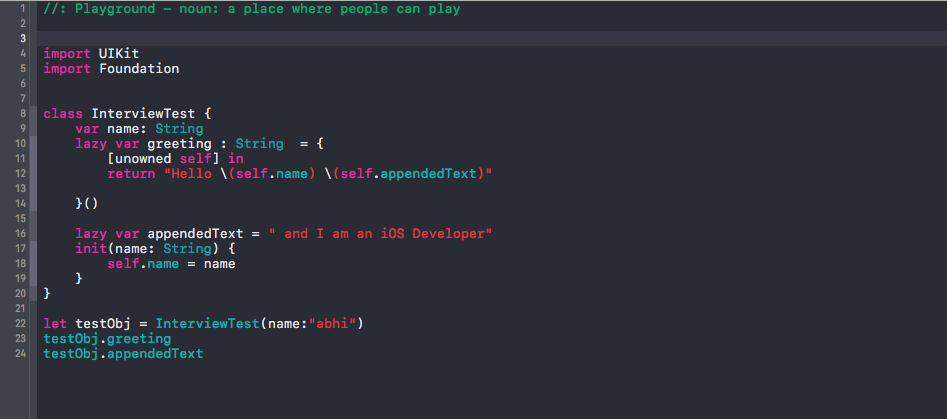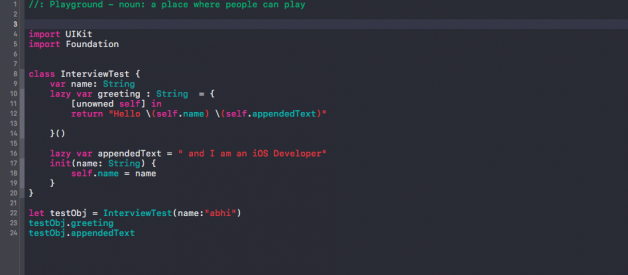This article explains the working of lazy var in swift.You must have some knowledge in closures.
Read this article for more info on closures.
While dealing with iOS app development we should be really very much conscious about the amount of memory used by the application. If the app is a complex one, then the memory issues are one of the major challenges for the developer. So, the developer should be really writing an optimised code which consider memory allocation at first place. The developer need to avoid doing expensive work unless it?s really needed. These complex allocations will take more time and it will seriously affect the performance of the application as well.

Swift has a mechanism built right into the language that enables just-in-time calculation of expensive work, and it is called a lazy variable. These variables are created using a function you specify only when that variable is first requested. If it?s never requested, the function is never run, so it does help save processing time.
Apple?s official documentation says:
A lazy stored property is a property whose initial value is not calculated until the first time it is used. You indicate a lazy stored property by writing the lazy modifier before its declaration.
You must always declare a lazy property as a variable (with the var keyword), because its initial value might not be retrieved until after instance initialization completes. Constant properties must always have a value before initialization completes, and therefore cannot be declared as lazy.
To explain this, I will use a basic example: Consider a struct called InterviewCandidate. It has an optional bool value to decide if the candidate is applying for ios or android. Resume description for iOS and android are declared as lazy variables. So , in the following code, the person is an iOS developer and the lazy variable iOSResumeDescription will be initialized when called for printing . androidResumeDescription will be nil.
This is a very basic level example. If we have a complex class or struct which contains computed variables which return the result from a recursive function and if we create a 1000 objects of this, then the performance and memory will be affected.
Lazy Stored Property vs Stored Property
There are a few advantage of a lazy property over a stored property.
- The closure associated to the lazy property is executed only if you read that property. So if for some reason that property is not used (maybe because of some decision of the user) you avoid unnecessary allocation and computation.
- You can populate a lazy property with the value of a stored property.
- Important to note: You can use self inside the closure of a lazy property. It will not cause any retain cycles. The reason is that the immediately applied closure {}() is considered @noescape. It does not retain the captured self.
But, if you need to use self inside the function. In fact, if you’re using a class rather than a structure, you should also declare [unowned self] inside your function so that you don’t create a strong reference cycle(check the code below).
// playground codeimport UIKitimport Foundationclass InterviewTest {var name: Stringlazy var greeting : String = { return ?Hello (self.name)? }()// No retain cycles here ..init(name: String) {self.name = name }}let testObj = InterviewTest(name:?abhi?)testObj.greeting
You can reference variables regardless of whether or not you use a closure.
lazy var iOSResumeDescription = ?I am an iOS developer?
This is also a working syntax.
Note: Remember, the point of lazy properties is that they are computed only when they are first needed, after which their value is saved. So, if you call the iOSResumeDescription for the second time, the previously saved value is returned.
Lazy rules:
- You can?t use lazy with let .
- You can?t use it with computed properties . Because, a computed property returns the value every time we try to access it after executing the code inside the computation block.
- You can use lazy only with members of struct and class .
- Lazy variables are not initialised atomically and so is not thread safe.


